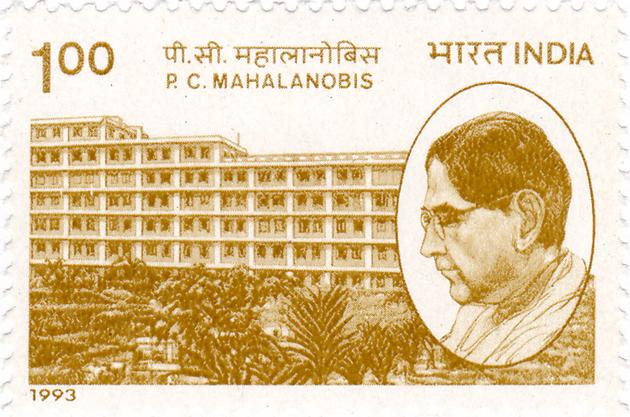National Statistics Day: Remembering PC Mahalanobis
Mahalanobis took a leading role in independent India – through establishing various national, state, and district statistical offices for smoother coordination of official statistics. He was also the architect of India’s Second Five Year Plan.
During the communal riots in Delhi in 1947, many people from a minority community took refuge in Red Fort. The government had no count of the number of refugees, and contractors responsible to feed them charged high amounts. A team from the Indian Statistical Institute (ISI) solved the problem. They felt that the contractors would have inflated the amount of rice and pulses, but had no reason to do so with salt as it was cheap. So, they divided the quantities of rice, pulses and salt used per day to feed all the refugees (according to the contractors) by the respective per capita requirements of these commodities, and got three estimates of the number of refugees. The estimate obtained by salt was the smallest and estimate from the rice was the largest – rice being the most expensive one, its quantity was probably exaggerated. They proposed the quantity obtained from salt as an estimate of the number of refugees. The method was verified as feasible in the case of the refugees at the site of Humayun’s Tomb.

The ‘salt experiment’ is attributed to JM Sengupta – an associate of Professor Prashanta Chandra Mahalanobis. Did Mahalanobis have any role in developing the idea? I asked many people, but couldn’t get a conclusive answer. However, it’s hard to believe that it was possible to conduct such a non-standard experiment in that era without discussing it with Mahalanobis. However, it illustrates that statistics is beyond data or methodology.
Through decades of tireless effort and leadership, Mahalanobis built a strong statistical culture in India. He did world-class research on statistical theories and methodologies, carried out surveys, spotted and nurtured young scientists, established the Indian Statistical Institute (ISI) – “a mighty monument of his handicraft”, founded and nurtured Sankhyā – the Indian Journal of Statistics, organised various statistical conferences, initiated teaching and training in statistics in the country, guided applications of statistics in various policy-decisions, let young talents, including future Nobel and Abel laureates blossom, and hosted world-class foreign scientists for academic interactions. An incredible achievement in one lifetime. Today is National Statistics Day today, the birthday of Professor Mahalanobis.
As the president of the 1950 Science Congress in Pune, Mahalanobis delivered a lecture entitled “Why Statistics?” Statistics was “a new technology for increasing the efficiency of human effort in the wildest sense” to him, and he turned statistics as a key technology for the development of the nation. When the Hirakud dam on the Mahanadi was completed in 1957, Nityananda Kanungo, then chief minister of Orissa, wrote to Mahalanobis paying him a glowing tribute. The reason was that in 1926 when Mahananobis analysed 60 years’ of data related to floods in Orissa, which was the basis of the hydroelectric project on the Mahanadi. In his famous jute survey of Bengal in the 1940s, he exhibited “accuracy and economy” of sample surveys at a tenth of cost and fiftieth of the workforce. Mahalanobis’ large-scale sample survey in famine-hit Bengal during 1944-45 to study the causes and extent of the famine was also remarkable.
It is little surprise that statistics under Mahalanobis would play a leading role in independent India as well – through establishing various national, state, and district offices for smoother coordination of official statistics. He was also the architect of India’s Second Five Year Plan. On his death, the UN Statistical Commission in its resolution in 1972 said: “Remembering his pioneering efforts on behalf of social statistics, remembering him as a champion of statistical needs of the developing countries, remembering the outstanding stimulus he gave to statistical development throughout the entire world...”
In the last two decades, statistics has undergone a change in its style of functioning. As a result of the Internet,there is a flood of data, mostly junk, and much more than statistical technology can leverage. Consequently, a different set of experts – data scientists – has emerged, who primarily run routine software and algorithms for data analyses. However, the theory is still insufficient, and outcomes are often questionable. Someone like Mahalanobis, who had an uncanny knack for perfection and who understood the “dance steps of numbers in the arena of time and space” better than anybody else in this business, would have been the best person to handle such a situation – to guide analyses, or even to discard it was found to be meaningless.
Styles of major statistical activities such as censuses and surveys are also changing dramatically. India’s 2021 Census will be a digital exercise. Countries like Germany, Switzerland, Norway, Estonia, Singapore, the United Kingdom, and the United States are now conducting or planning to conduct decennial censuses by combining registers of jobs, fiscal administration, social security, pension, school admission, hospital records and tax. The objective is to improve accuracy and simultaneously save time and money. The dynamics of other surveys will also change in the world of the coronavirus pandemic. The leadership of an expert like Mahalanobis is needed at this defining moment of changing statistical perspectives.
Atanu Biswas is professor, Statistics, Indian Statistical Institute, Kolkata
The views expressed are personal





